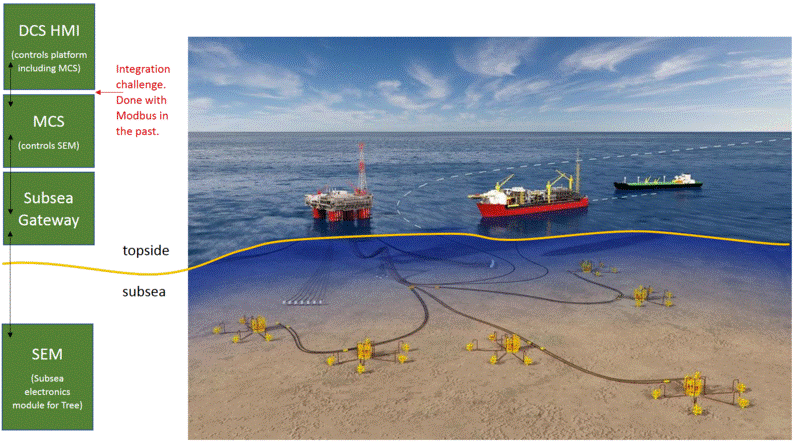

The development of subsea controls has been based on a step by step development over the years adding more and more functionalities to the various systems. Today, tremendous technology developments are ongoing, driven by the goal of locating processing systems on the seabed. The increase in complexity is extensive compared to the early beginning with North East Frigg some 30 years ago towards the subsea compression facilities that are currently being realized. There has been a development in technological areas such as; design, materials, flow assurance, control and instrumentation, installation and operation. The driver has been to develop simpler and more cost-efficient ways to produce, process and transport oil and gas offshore. To achieve this, the industry is relying more and more on utilizing subsea system as part of this value creation, and the subsea part of a field development is getting more advanced. The number of installed subsea X-mas Trees today is about 800 on the Norwegian Continental Shelf, and approx. 5000 on a worldwide basis. These numbers are forecasted to increase in the years to come, both with known technology and more complex developments utilizing new technology.
Subsea-to-topside interfaces have been developed by integrating distributed control systems (DCS) to the subsea system via the master control system (MCS)-DCS gateway. This uses OPC for non-critical data and Modbus for critical data. The MCS-DCS Interface Standardization (MDIS) was established in 2010 to streamline the interface between MCS and DCS, while increasing data reliability and quality. The first step was to identify a protocol for each criterion:
|
Selection Criteria |
Protocols |
|
Reliability |
Modbus TCP/IP |
|
Cyber Security |
OPC-UA |
|
Bandwidth and Media |
DNP |
|
Support by DCS and SEV |
Ethernet-IP |
|
Redundancy Support |
ProfiNet |
|
Support Organization |
OPC-DA etc., |
Over the years, the subsea-to-topside interface with MDIS has significantly minimized the interface management tasks, simplified interface architecture, optimized testing, and helped reduce overall interface costs. In today’s technology scenario, the subsea monitoring and control module enables the subsea production assurance services (surveillance, flow boosting, and flow assurance). It is a communication and power hub for the subsea and downhole devices that allow surface equipment to communicate directly with the subsea systems.
With the introduction of MDIS and communication protocols, the subsea controls have been able to provide some crucial benefits in past few years:

Today’s subsea production systems tend to go deeper, have reservoirs with higher temperature and pressure, be in fields located in regions with a colder climates (artic), include installation of subsea processing equipment (demand for more power), and are at longer distances from infrastructure. Traditional production control systems monitor processes with relatively slow process dynamics. Condition and performance monitoring systems may, in many cases, be monitoring systems with much faster dynamics. This may require improved instruments and data sampling systems. The amount of data being transmitted from a subsea installation may also increase considerably. There is a risk that introducing new equipment and an increase in data will introduce faults into the control system. It will be important to ensure adequate independence between critical control/safety functions and monitoring functions, so the reliability of the critical functions is not compromised.
Depending on the project requirements, the topside control units can be integrated by adding the pump control to an existing production control system, or vice versa. For new projects, a full integration can be achieved from topside to subsea from system to board level. These full integrations can utilize common building blocks from the same subsea control module (SCM) product family. Core components from existing technologies have been thoroughly evaluated and selected to form the basis for the new pump SCM. New, single-unit, integrated SCMs expand the range of available SCMs. The integration also facilitates the use of online life-of-field services for pump and production controls.
Recent ARC research into the market for Subsea Controls: A Migration Path to The Future, includes systems such as Master Control Stations (MCS), Subsea Power & Communication Units (SPCU), Hydraulic Power Unit (HPU), Subsea or Topside Termination Umbilical Assembly, Subsea Control Modules (SCM), Sensors & Electrical Distribution Equipment, etc. for applications such as Subsea Production, Processing & Compression, Installation & Workover.
ARC welcomes the opportunity to speak with technology suppliers and users alike about your activities, thoughts, perspectives and questions on this exciting area. For further discussion or to provide feedback on this blogpost, please contact the author, Jyoti Prakash, at jprakash@arcweb.com.

